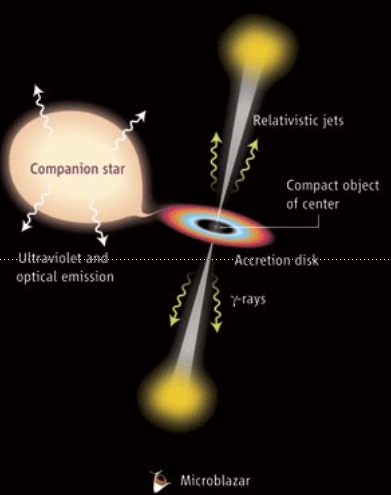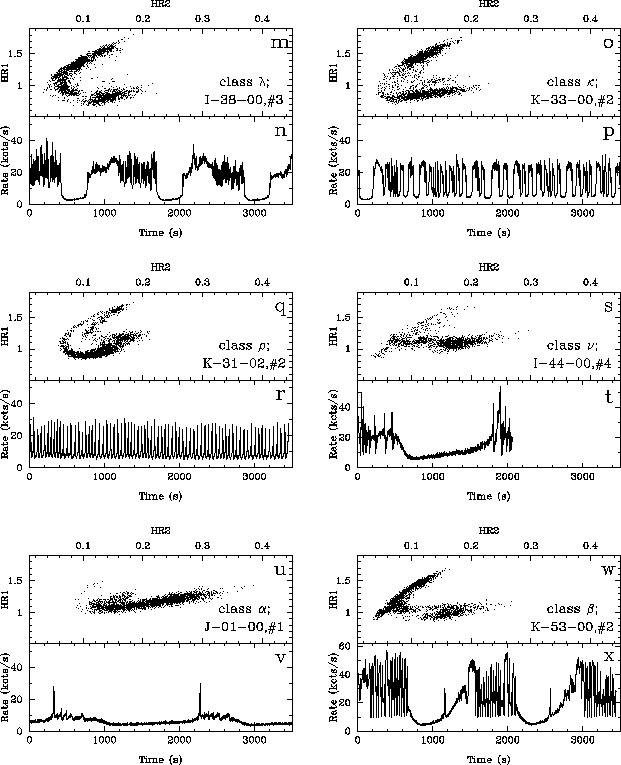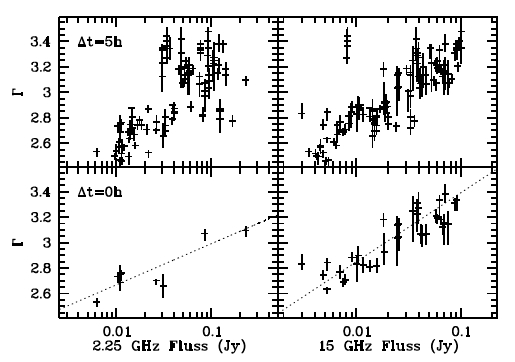
Arne Rau
Postdoctoral Researcher in Astrophysics at MPE Garching

Links
Microquasars:
| Introduction: Microquasars are X-ray binaries which exhibit ultra-relativistic bipolar outflows. In these systems, a stellar mass compact object (either a neutron star or black hole) accretes matter from a compaion star through an accretion disk (Figure right from Mirabel et al.) Their radio-to-X-ray properties remind to (scaled) Quasars, thus the naming. As the scales of length and time are proportional to the mass of the central source, phenomena which take decades to centuries in quasars (super massive black hole with millions of solar masses) can be observed in seconds to minutes in Microquasars (a few solar masses). Microquasars are promising laboratories for studies of accretion, black hole rotation and the formation of relativistic jets. |
 |
 |
GRS1915+105: The Galactic system GRS 1915+105 is the most prominent microquasar showing dramatic variability in its light curve (Figure left from Belloni et al. 2000), quasi-periodic oscillations, phase lags, and coherence behavior. It is the most energetic object known in our galaxy, with a luminosity of 5 × 1039 ergs s-1 in the high state and 1038 ergs s-1 in the low state. The binary system, located at a distance of 12 kpc, contains a 1 solar mass late-type giant in a 33.5 day orbit around a 14 solar mass black hole, making it the most massive stellar black hole known. |
| RXTE study of GRS1915+105 GRS1915+105 is monitor by RXTE for more than a decade. In 2003, I analyzed the first four years of pointed observations while the source was in a stable state (AR & Greiner, 2003, A&A, 397, 711). I showed that the spectrum was dominated by a hard power-law shaped component arising from inverse Compton scattering of soft disk photons on a thermally dominated hybrid corona above the accretion disk. Also, the radio fluxes at 2.25 GHz and 15 GHz correlate with the power law slope, thus revealing a connection between the outflowing matter and the comptonizingregion. Further, a 590 day long-term quasi-periodicity was found in X-rays and radio, possibly originating from a precession of a radiation-induced warp in the accretion disk (AR et al., 2003, ApJ, 590, L37). |  |